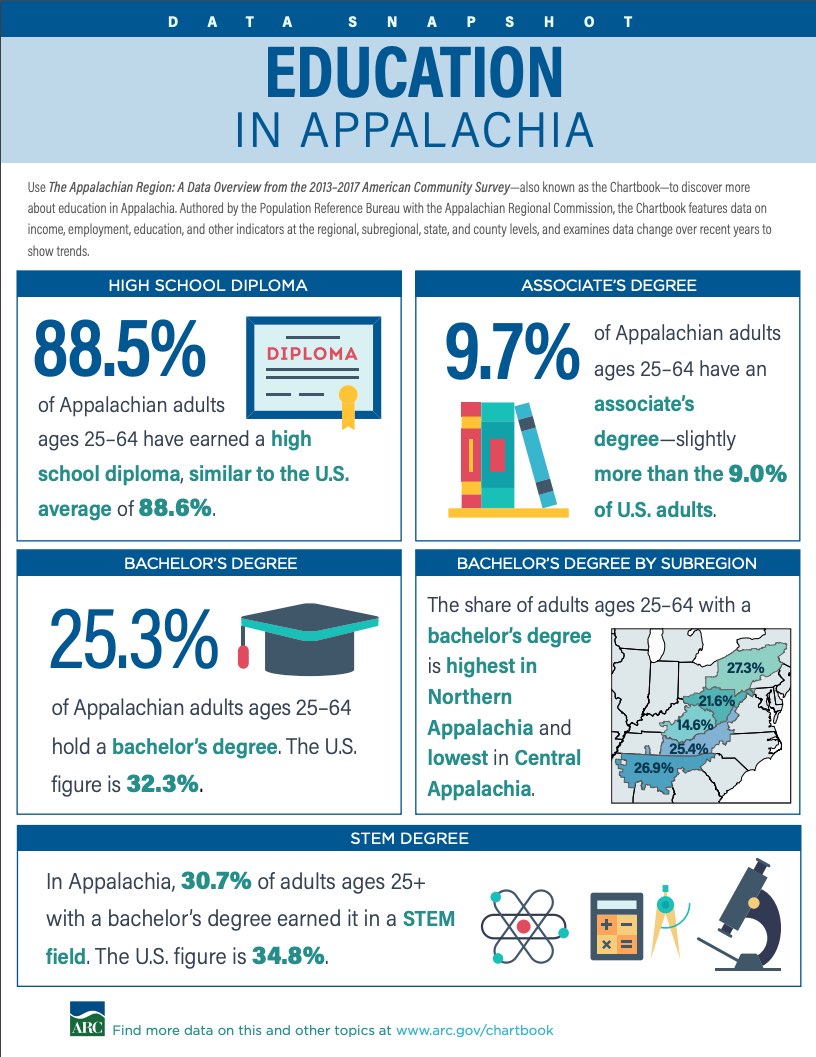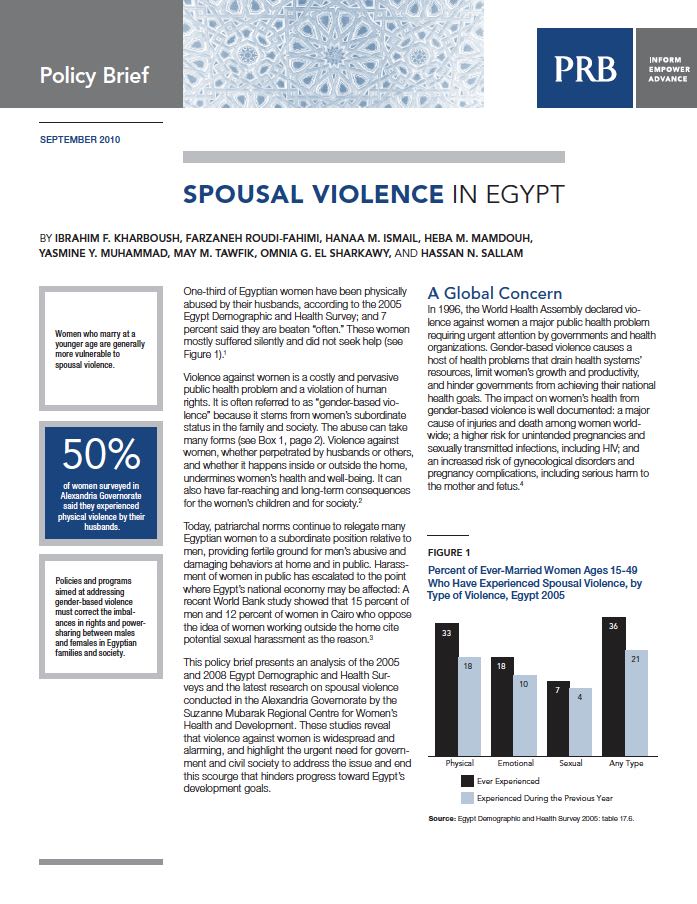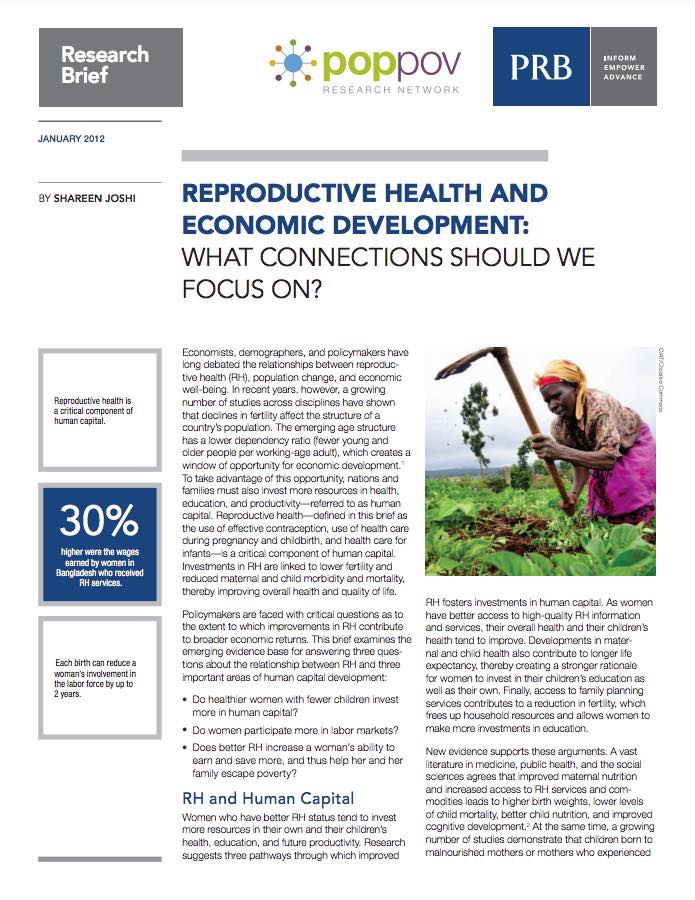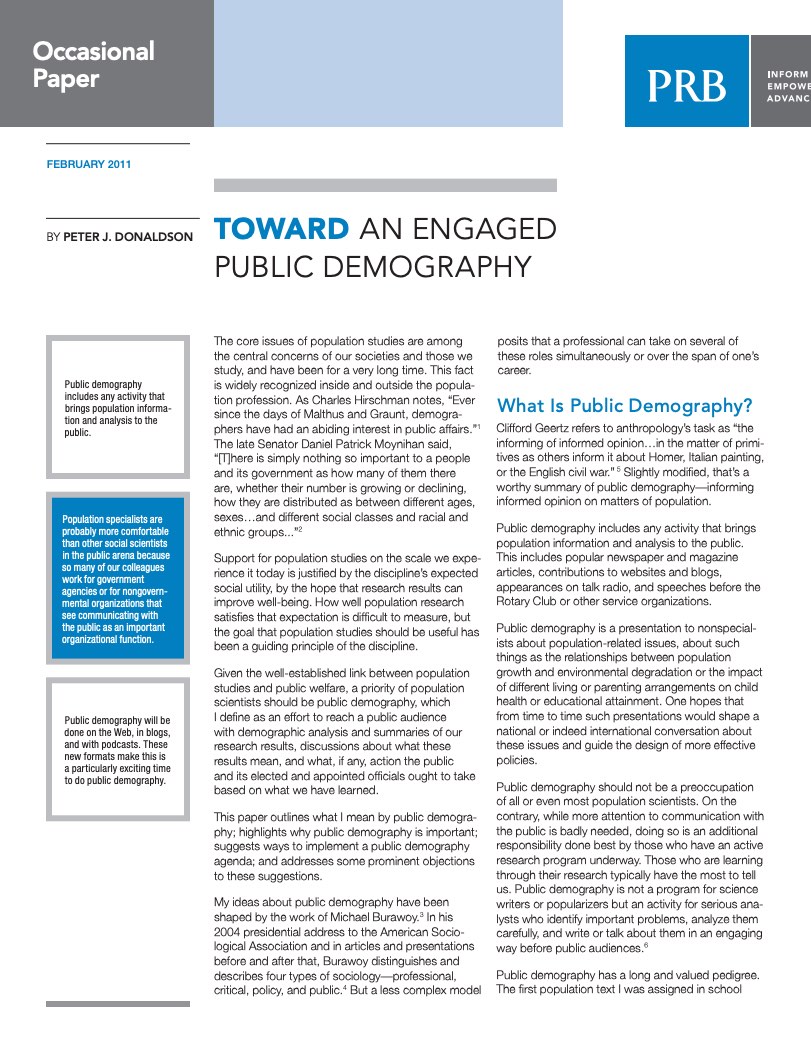Project: American Community Survey and Decennial Census Support Services
Data Snapshot. Education in Appalachia (2013-2017)
88.5% of Appalachian adults (ages 25-64) have earned a high school diploma, similar to the U.S. average of 88.6%.

Project: American Community Survey and Decennial Census Support Services
88.5% of Appalachian adults (ages 25-64) have earned a high school diploma, similar to the U.S. average of 88.6%.

(2010) One-third of Egyptian women have been physically abused by their husbands, according to the 2005 Egypt Demographic and Health Survey; and 7 percent said they are beaten "often." These women mostly suffered silently and did not seek help.
Project: Demography and Economics of Aging and Alzheimer’s Disease
(2013) Despite having lower income and education levels, U.S. Hispanics tend to outlive non-Hispanic whites by several years.
(2008) A new study in Proceedings of the National Academy of Sciences reports on a sex ratio that favors boys among U.S.-born children in Indian, Korean, and Chinese families.

(2012) Reproductive health—defined in this PopPov Research Network brief as the use of effective contraception, use of health care during pregnancy and childbirth, and health care for infants—is a critical component of human capital.
Even before the massive earthquake in January 2010, Haiti's nearly 10 million people ranked as the poorest in the Western Hemisphere.

(2008) Research has shown that growing up in poverty leads to negative health, social, and economic consequences for children that often continue in adulthood.

(2020) The world is better equipped to fight a pandemic today than it was in 1918, when influenza swept the globe and infected up to one-third of the world’s population.1 While science and medical advances have given us new advantages in fighting disease, some demographic trends since 1918 may increase the risk for spreading contagions and our vulnerability to viruses.